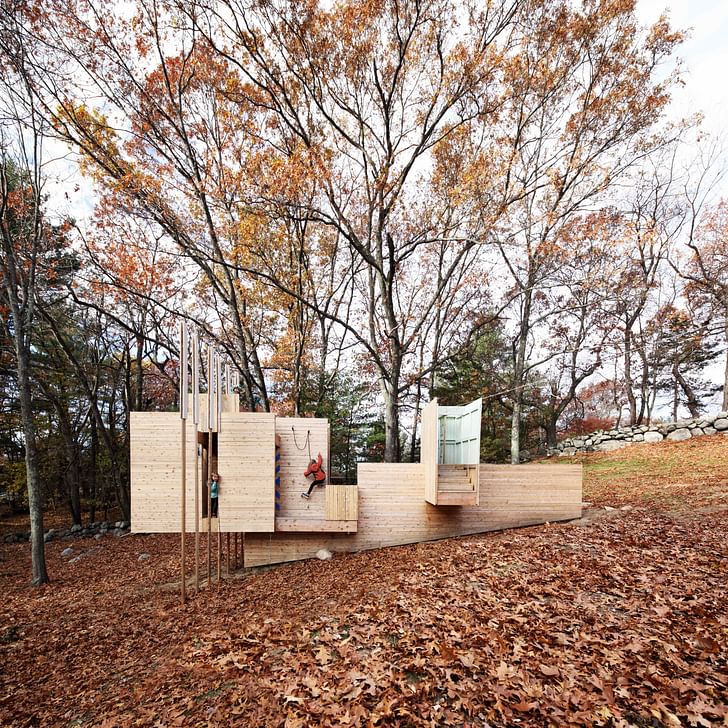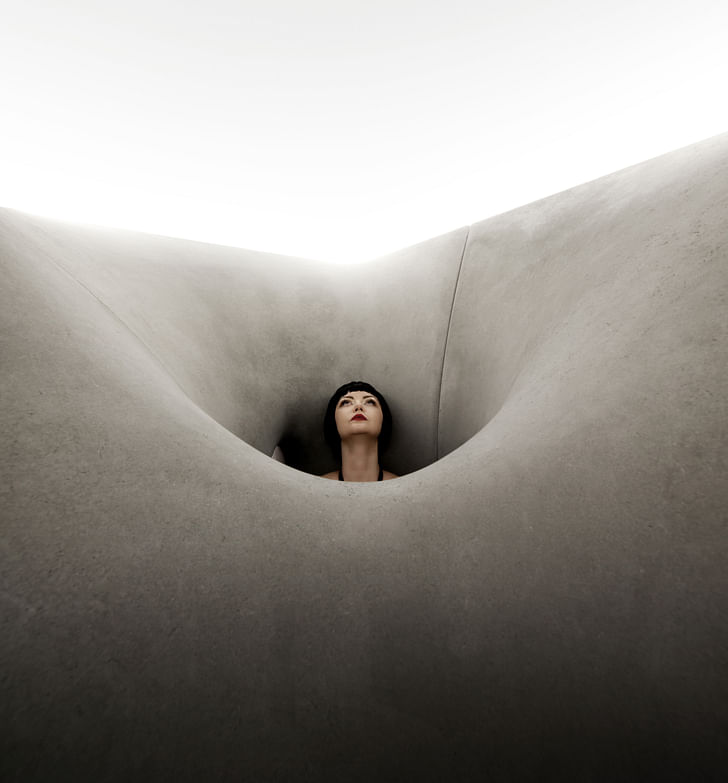

This week on, Small Studio Snapshots, we talk with Brandon Clifford and Wes McGee of Matter Design - an interdisciplinary studio founded in 2008. Recent finalists of the 2017 AZ Awards, the duo discuss their love of taking on experimental projects, merging the design and making process, and even give us a little background on the history of the architecture studio.
How many people are in your practice?
We actually don’t know! This is emblematic of Matter Design that we had to ask each other what should be the most automatic question on this list. We aren’t a conventional practice. In fact, we have never lived in the same state as long as we have been partners. We don’t hire employees under the banner of Matter Design, instead we hire Research Assistants at our respective institutions. We aren’t a conventional practice. In fact, we have never lived in the same state as long as we have been partners. We don’t take on client work (though this could change), instead we are a research lab, which we love. Depending on the topic at hand, or the kind of work we are investigating, our team of researchers could vary from as little as 2 to 10. We currently have 3 full time researchers at MIT and another 3 at the University of Michigan. Another sample of this mentality is the Quarra Matter fellowship, an industry/academy partnership, where each year 1 fellow from MIT and another from Michigan are embedded at Quarra Stone in Madison, WI to conduct a research project in stone for the course of the summer. As you will see from our genesis story below, we prefer this model of integration over a studio full of drafters.

Why were you originally motivated to start your own practice?
We are both designers that have approached a similar motivation through two disparate paths. Brandon followed the more conventional path of an architect, while Wes began as a Mechanical Engineer who transitioned into Industrial Design. We simply wanted to experiment with re-merging the design process with the making process We both shared a passion for physicalizing digital content, and we also both recognized the ongoing and unfortunate division between thinker and maker. This is how Matter Design began. We simply wanted to experiment with re-merging the design process with the making process. Asking questions like “is it possible to build code that would ensure anything we model could be fabricated?” These foundation experiments have since expanded to tackle other disciplinary topics like structure, acoustics, and thermal conditions, while simultaneously expanding to extra-disciplinary topics such as theatricality. Basically, our motivation to start Matter Design was founded on a frustration that has unlocked new questions to exercise at each turn.

What hurdles have you come across?
We have two major hurdles that are a continual struggle. The first is convincing others to try something new, which is more of a statement about ourselves and less about the public at large. We spend a great deal of time researching, reading, and exploring new territory to find the next disruptive question in our work. We also spend a great deal of time trying to sell the idea of getting into that new question. We would naturally rather spend that time on exercising that question. We are incredibly fortunate to have encountered people that do push us into these new territories—collaborators, colleagues, and critics. But, we also encounter those that resist the unknown. We find this to be most toxic if that attitude is offered by those you expect to be supportive of creativity - generally, other creatives that have firm ideas about what the discipline of architecture should be. Finding those collaborators and supporters that are interested in the unknown is tricky. Creatives are fueled to try new things, but run into friction when asked to repeat, facsimile, and copy The second hurdle we have come across is in conveying method over product. You can’t blame people for thinking we produce products, especially because we do—jewelry, furniture, books, etc. However, our experimental research projects resist this notion of product. One hopes that we develop new methods which should manifest in a variety of manners, responding to a variety of contingencies. An example of this would be a request to purchase a site-specific installation to re-installing in alternative context. While we would prefer a new commission, affording us the opportunity to push this method further, this perception of product ultimately wraps back around to the first hurdle. Creatives are fueled to try new things, but run into friction when asked to repeat, facsimile, and copy. We try to identify this in conversations with potential projects, to see if there is an interest to find what is next. This is the endless struggle.

Is scaling up a goal or would you like to maintain the size of your practice?
Flexibility is our goal. If we have learned anything over the past decade of collaboration, it is that you never know where your topics of inquiry will take you. Generally, we get the question about scale of work instead of scale of practice. Because of our genesis story, we have built each of our designs ourselves, pre-determining the scale of our projects we produce; however, we are now collaborating with fabricators and these are proving to be incredibly exciting projects for us. By the way, large firms are a relatively new experiment in architecture In the end, we are not dedicated to the installation-scale work, rather we are dedicated to merging the digital and the physical. This might scale up, and it might scale down, but because our dedication is to this integration instead of a specific scale of work, we prefer to stay as flexible as possible. By the way, large firms are a relatively new experiment in architecture. Robert Gutman has a great analysis of architect’s obsessions with studio size. He outlines that for centuries, architecture practices were never larger than roughly 10 people (a studio), until the early 1900s. Now we conglomerate firms of thousands… strange in fact.

What are the benefits of having your own practice? and staying small?
We are able to feed the correct talent to the project as opposed to feeding projects to a pool of employees We love the work we do. We aren’t sure if that has to do with size, but we can see that it doesn’t hurt. To consider a cliché of building a larger practice, ‘one must feed the monster’. It is of course disingenuous for us to qualify large practices in that way since we have never managed a large firm, but one value that we greatly appreciate about the model we are following is we are able to feed the correct talent to the project as opposed to feeding projects to a pool of employees. Plenty of disadvantages come along with our size, but we are now numb to those, preferring to focus on the benefits.

No Comments
Block this user
Are you sure you want to block this user and hide all related comments throughout the site?
Archinect
This is your first comment on Archinect. Your comment will be visible once approved.